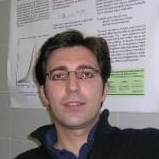Selected Papers from POLYMAR 2018
A special issue of Applied Sciences (ISSN 2076-3417). This special issue belongs to the section "Nanotechnology and Applied Nanosciences".
Deadline for manuscript submissions: closed (30 May 2019) | Viewed by 8774
Special Issue Editors
Interests: nanoencapsulation; biopolymers; barrier packaging; coatings; antimicrobials
Special Issues, Collections and Topics in MDPI journals
Interests: biodegradable polymers; biopolyesters; food packaging; nanocomposites; polymer processing
Special Issues, Collections and Topics in MDPI journals
Interests: design and optimization of physical processes, design and development of new products (especially foods), determination of the thermophysical properties of materials, as well as evaluation of the economic and environmental impact of several products and processes
Interests: polymer nanocomposites; biopolymer; nanofiber
Special Issue Information
Dear attendees,
We invite you to send full papers of your presentations to the Special Issue of Applied Sciences about POYMAR 2018. The POLYMAR 2018 conference intends to provide a welcoming forum for the polymer scientific community to meet up, showcase their latest work and activities and network with their peers. All attendees are expected to provide short talks, highlighting their main research results, interests and current activities. Although the conference is intended primarily for early career polymer scientists including early career group leaders, permanent researchers starting their own groups, early stage academics who are currently part of a group, post-docs and PhD and Master students, it is, in fact, open to anyone working in polymers.
The conference is also intended, like any related conference, to gather a “snapshot” of what is currently exciting in the area and it is also open to polymer scientists from industry. A major focus of the conference will be to gain value and perspective from the significant knowledge garnered over the years in the field. We recognize that macromolecular science is broad in scope and we hope that scientists, not familiar with the discipline, will find complementarity to their research and technological activities. We embrace interdisciplinary practitioners and anticipate researchers coming from the fields of analytical science, extreme materials, cosmetic, biomedicine, pharmaceutical, biotechnology, nanotechnology, packaging and food science and technology. In the current somewhat depressing international environment for research funding and employment opportunities, where national and industry funding is getting more and more scarce, it is a moment for the ESR community to pull together and in partnership find ways to take research into valuable action, either by forming international teams to tackle European or international Grand Challenge projects or by creating spin-offs to produce the next generation of technology-based industries.
Prof. Dr. Jose Maria LAGARON
Dr. Luis Cabedo Mas
Prof. Dr. Magda Krokida
Prof. Dr. Branka Pilic
Prof. Dr. Chris Sammon
Guest Editors
Manuscript Submission Information
Manuscripts should be submitted online at www.mdpi.com by registering and logging in to this website. Once you are registered, click here to go to the submission form. Manuscripts can be submitted until the deadline. All submissions that pass pre-check are peer-reviewed. Accepted papers will be published continuously in the journal (as soon as accepted) and will be listed together on the special issue website. Research articles, review articles as well as short communications are invited. For planned papers, a title and short abstract (about 100 words) can be sent to the Editorial Office for announcement on this website.
Submitted manuscripts should not have been published previously, nor be under consideration for publication elsewhere (except conference proceedings papers). All manuscripts are thoroughly refereed through a single-blind peer-review process. A guide for authors and other relevant information for submission of manuscripts is available on the Instructions for Authors page. Applied Sciences is an international peer-reviewed open access semimonthly journal published by MDPI.
Please visit the Instructions for Authors page before submitting a manuscript. The Article Processing Charge (APC) for publication in this open access journal is 2400 CHF (Swiss Francs). Submitted papers should be well formatted and use good English. Authors may use MDPI's English editing service prior to publication or during author revisions.









